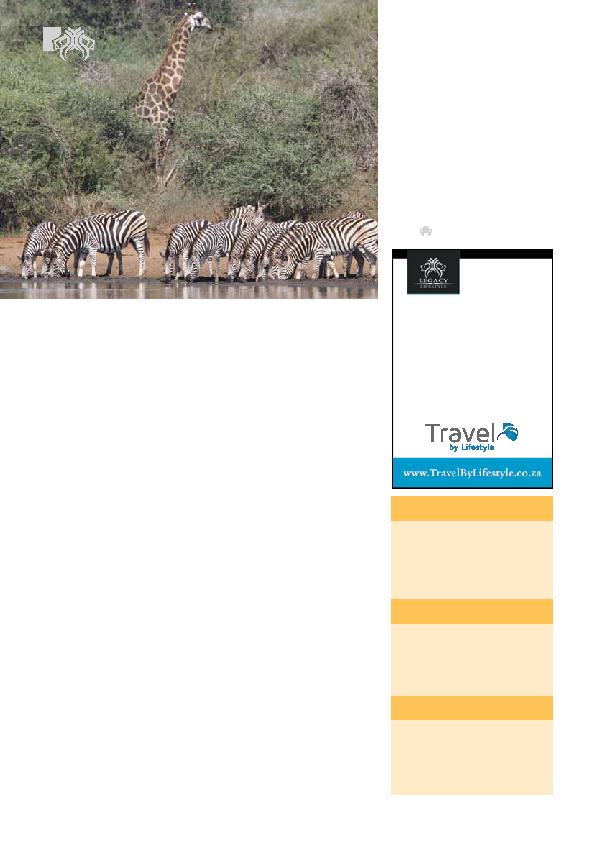
largest national parks in the world and
covers a staggering surface area of 19,485
square kilometres.
rivers flow through the park, that being the
Crocodile and Limpopo rivers, which both
create natural boundaries to the park. Other
rivers include the Sabie, Olifants, Letaba,
and Luvuvhu.
multitude of climates in a single day. As
it is situated in the subtropical Lowveld,
its summers are exceptionally hot and
humid and its rainy season runs from
September to May. Winters are moderate
and dry, which also means that winter is
cited as the best time to spot animals as
the foliage is less dense and the animals
flock to the watering holes to find water and
sustenance.
exercise caution when visiting. Another
reason that winter is a favourite time to visit
is the likelihood of contracting malaria in the
colder months is very small.
national parks, Kruger is home to an
impressive number of species: 336 trees,
49 fish, 34 amphibians, 114 reptiles, 507
birds and 147 mammals.
see for any safari goer. Elephant, rhino,
hippopotamus, baboon, giraffe, zebra,
buffalo, wild dog, crocodile, warthog and
a drive as well as large carnivores like the
lion, leopard, cheetah, wild dog and spotted
hyena.
porcupines, aardvark and honey badger,
making the park a complete hybrid of
animal activity
in the park. Many of the birds in the park
can only be found in the park itself, making
it a veritable treasure hunt for the avid
ornithologist. Here you will see hornbills,
starlings, vultures, rollers, bee-eaters,
shrikes, the awkward saddle-billed stork,
Kori Bustard, Martial Eagle, a range of
endangered vultures and owls as well as
a host of eagles and birds of prey, not to
mention the glorious coloured finches and
waxbills.
for better wildlife viewing. Purchase a
detailed map of the park at one of the rest
camp shops or entrance gates to help
you better navigate its great expanses.
Try and book your viewing around specific
times of the day, bearing in mind that the
best times to view wildlife is in the early
morning and late afternoon as animals
don't move much in the heat of the day.
Be sure to visit the watering holes as you
will be sure to see animal activity there,
watch your follow spotters as if a car or
collection of cars are parked somewhere it
probably means there is something to see.
Your game rangers or wardens are a good
source of information, as are the sightings
boards at your camp.
Martial Eagle
Lappetfaced Vulture
Pel's Fishing Owl
Saddle-billed Stork
Southern Ground Hornbill
Leopard
Buffalo
Elephant
Rhino
Buffalo Weaver
Elephant Shrew
Leopard Tortoise
Ant Lion
visit the Kruger, take in its gorgeous
expanses, breathe in its wildlife and visit
its 255 recorded archaeological sites
ranging from early Stone Age (roughly
1 million years ago) to various Iron
Age settlements and recent historical
buildings and sites.
a drive, hop on a plane but get there.
The Kruger is a visit one must not
forego.